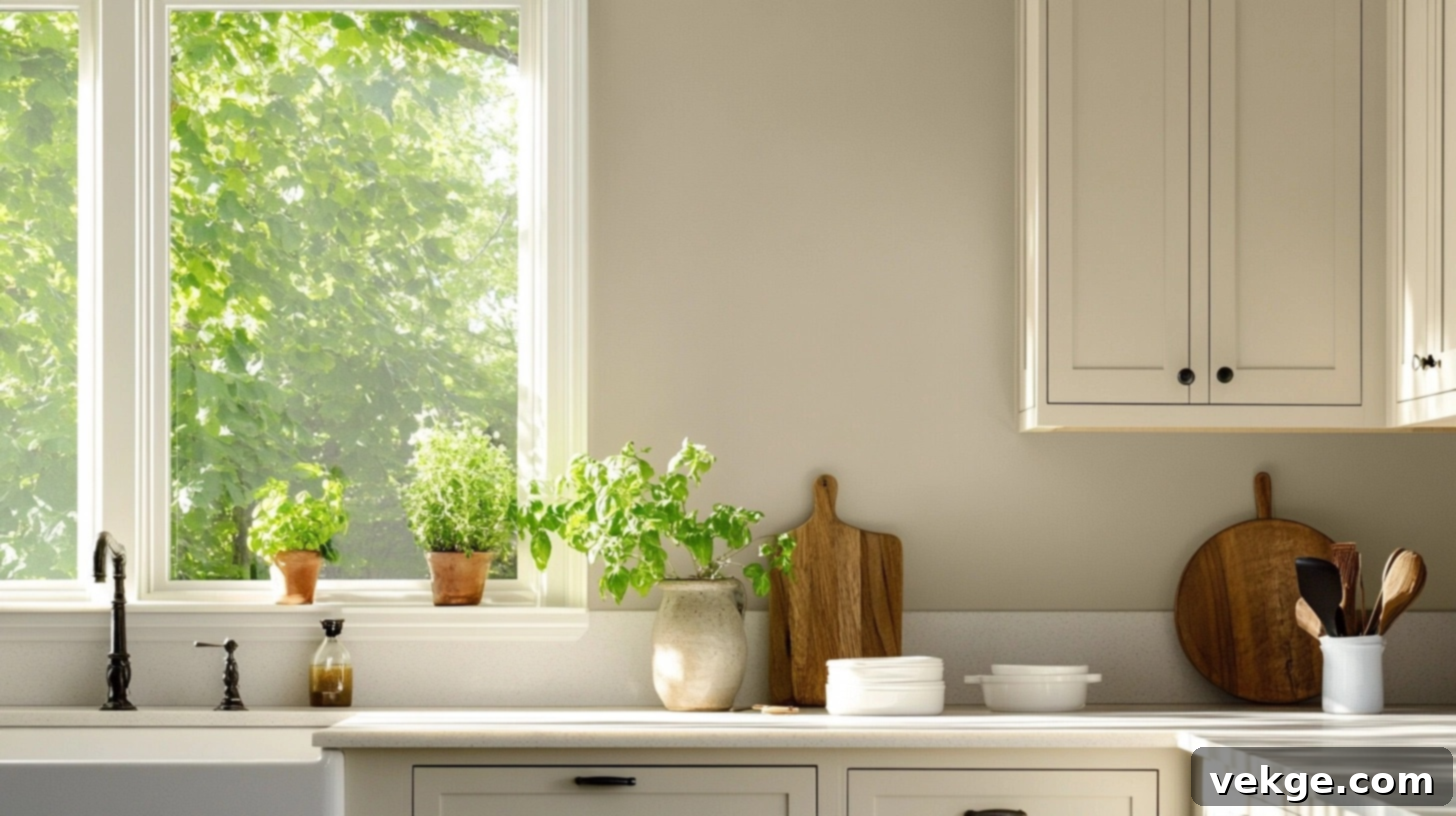The Ultimate Guide to Satin Paint: Appearance, Durability, and Best Uses for Your Home
Stepping into the paint aisle can often feel overwhelming, with a myriad of finish options that all seem subtly different yet profoundly impactful. If you’ve ever found yourself pondering the perfect sheen for your walls, wondering what truly sets one finish apart from another, you’re certainly not alone.
Among the most popular choices, satin paint frequently comes up in conversations about home decor and renovation. But what exactly is satin paint, what unique qualities does it possess, and when is it the ideal choice for your living spaces? Understanding this versatile finish can transform your home improvement projects from daunting tasks into confident decisions.
This comprehensive guide offers a crystal-clear look at everything satin paint has to offer. We’ll explore its distinctive appearance, robust durability, the specific areas of your home where it truly excels, and how it stacks up against other common paint finishes. Whether you’re dreaming of a kitchen refresh, a bathroom renovation, or simply revitalizing your living room, selecting the right paint finish is just as crucial as picking the perfect color.
Let’s demystify satin paint together and help you make an informed choice for a beautiful, long-lasting finish.
What is Satin Paint? A Perfect Balance of Sheen and Durability
Satin paint masterfully occupies the middle ground of the paint finish spectrum. It’s neither too flat nor excessively shiny, striking an ideal balance that many homeowners seek for their interior walls and various surfaces. This finish delivers a gentle luster that elegantly catches and diffuses light without creating harsh reflections or an overly glossy appearance. This unique quality makes satin paint a consistently popular choice for a wide array of indoor spaces, offering both aesthetic appeal and practical benefits.
Positioned between the dullness of flat matte and the high reflectivity of semi-gloss options, satin paint provides a distinct mid-sheen. When expertly applied, it creates a soft, almost velvety look. It offers just enough reflectiveness to introduce depth and dimension to your walls, making colors appear richer and more vibrant while maintaining a comfortable and inviting atmosphere in any room. Homeowners often gravitate towards satin for its ability to add a touch of sophistication and polish without making walls feel too shiny, sterile, or overtly formal.
The Craft Behind Satin Paint: A Blend of Beauty and Resilience
The distinctive characteristics of satin paint are achieved through a precise formulation that combines a matte base with a carefully measured amount of gloss. Paint manufacturers meticulously adjust this blend to produce a finish that offers a subtle sheen without excessive glare. This engineering results in a balanced finish that not only boasts a low, elegant shine but also contains sufficient binding agents. These binders are key to its enhanced washability and durability, making it significantly more resilient and easier to clean than traditional flat paints.
How Satin Finish Interacts with Light
The moderate light-reflecting properties of satin paint are one of its most intriguing features. It imparts a gentle glow to walls, making them appear luminous without the strong glare often associated with glossier finishes. This quality means that the appearance of satin paint can subtly change throughout the day, adapting to shifts in natural light, creating a dynamic visual experience.
However, it’s important to note that because satin paint does reflect some light, it can make wall imperfections slightly more visible compared to a completely flat paint. Minor bumps, small cracks, or uneven surfaces might become more noticeable, particularly under strong direct lighting. This characteristic is especially relevant when painting older walls that may have accumulated a few blemishes over time. Therefore, thorough surface preparation is crucial when opting for a satin finish to ensure a smooth, professional-looking result.
Where to Use Satin Paint in Your Home: Versatility Meets Practicality
From my experience, satin paint truly excels in areas that demand a harmonious blend of style, resilience, and ease of maintenance. Its full potential shines in rooms and on surfaces where a smooth, elegant, and effortlessly cleanable finish is paramount. This versatility makes it a go-to choice for various spaces throughout the house.
Ideal Rooms for Satin Paint
Choosing the correct paint finish can dramatically influence both the aesthetic and functional longevity of your rooms. Satin paint proves to be an outstanding choice in several key areas of the home, offering tailored benefits for each.
Kitchens: The Heart of the Home Needs a Robust Finish
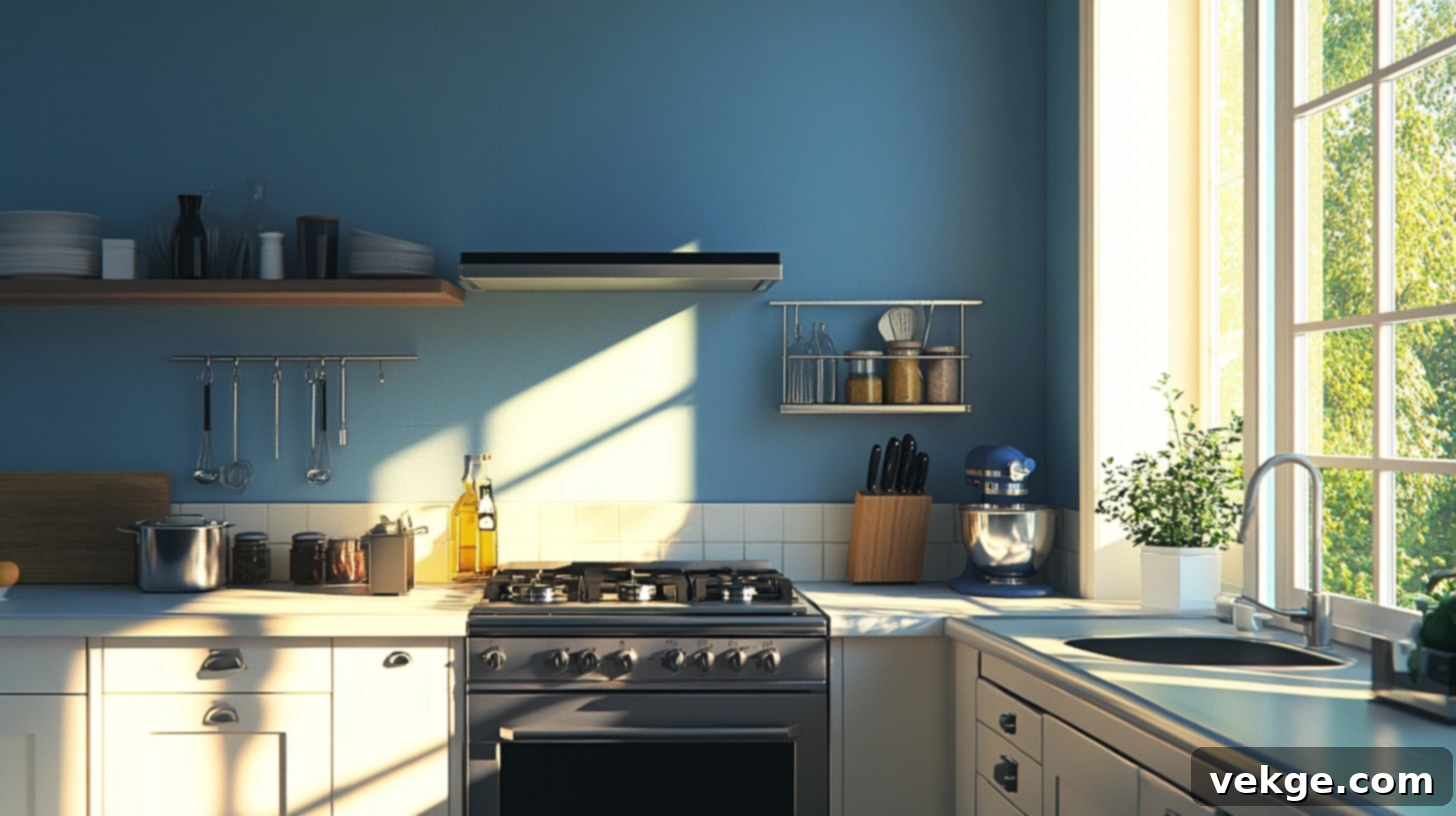
Kitchens are high-traffic, high-activity zones prone to spills, splatters, and daily wear. This is where satin paint truly earns its stripes. Its exceptionally washable surface makes cleaning up cooking splatters, food marks, and grease stains remarkably easy, ensuring your kitchen walls look fresh and clean even in this busy environment. The subtle sheen of satin paint also adds a touch of brightness and spaciousness without generating excessive glare under the various types of kitchen lighting, from overhead fixtures to task lighting.
Bathrooms: Resisting Moisture with Style

Bathrooms are environments characterized by high humidity and frequent moisture exposure. Satin paint is an excellent choice here due to its impressive ability to resist moisture and withstand regular cleaning. The finish holds up exceptionally well against shower steam and condensation, helping to prevent the growth of mildew and ensuring the walls maintain a fresh, clean appearance. Its mild water resistance significantly contributes to preventing wall damage in this consistently humid setting, extending the life of your paint job.
Hallways and Entryways: Durability for High-Traffic Zones
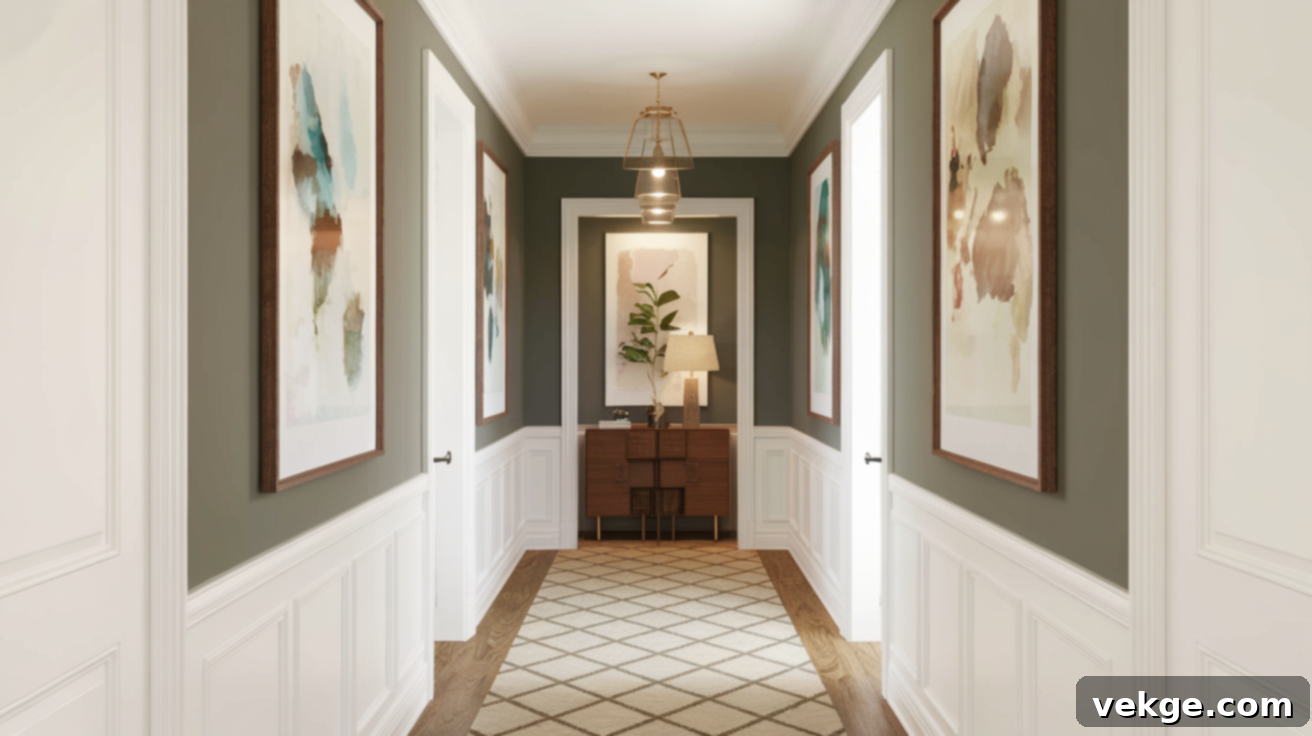
Hallways and entryways are subject to constant traffic, often encountering accidental bumps, scuffs from shoes, and marks from passing objects or hands. Satin paint’s inherent durability makes it an ideal solution for these frequently used areas. It demonstrates superior resistance to scrapes and abrasions compared to less resilient flat paints, and any marks can be easily wiped clean, preserving the aesthetic integrity of your walls over time.
Children’s Rooms: Practicality for Playful Spaces
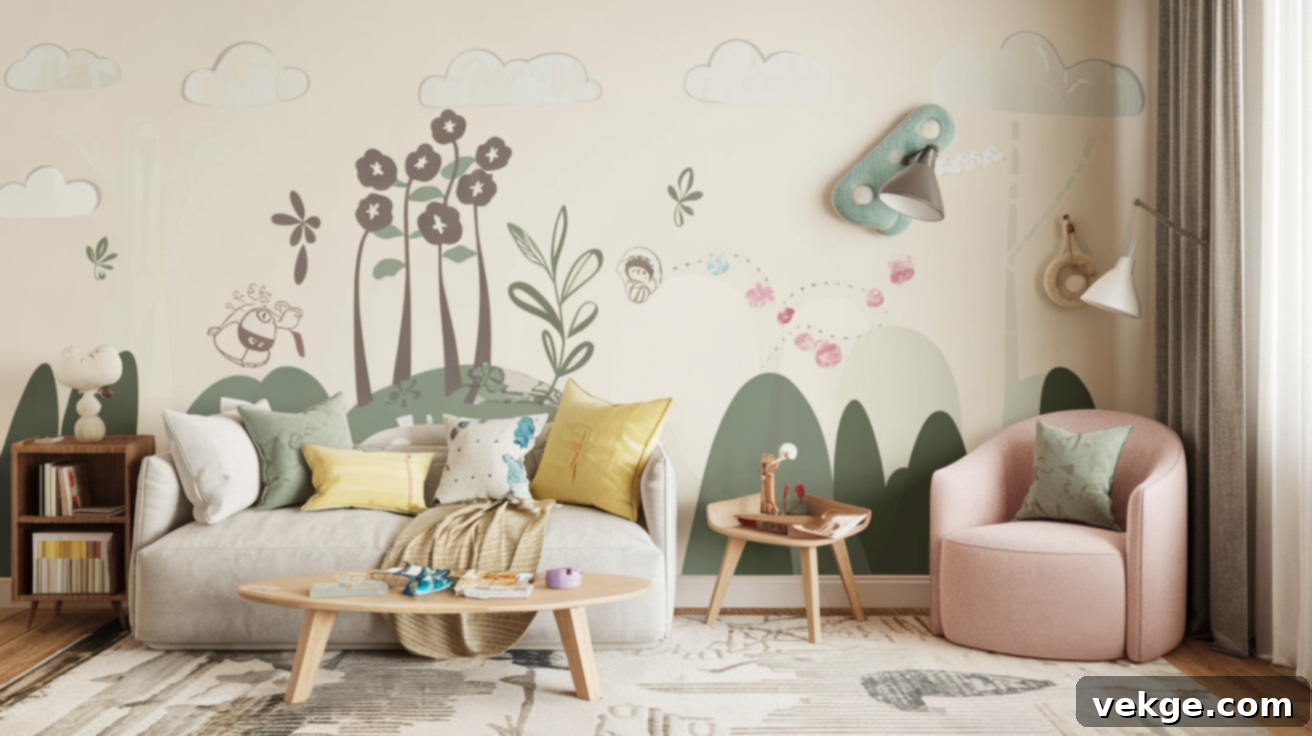
Children’s rooms are vibrant hubs of creativity and play, where walls often bear witness to crayon masterpieces, fingerprints, and various smudges. The practical nature of satin paint makes it a perfect match for these energetic spaces. Its easy-to-clean surface allows parents to effortlessly wipe away the evidence of creative moments or accidental marks without causing damage to the paint, helping to keep the room looking neat and inviting.
Interior Walls: Adding Depth and Polish
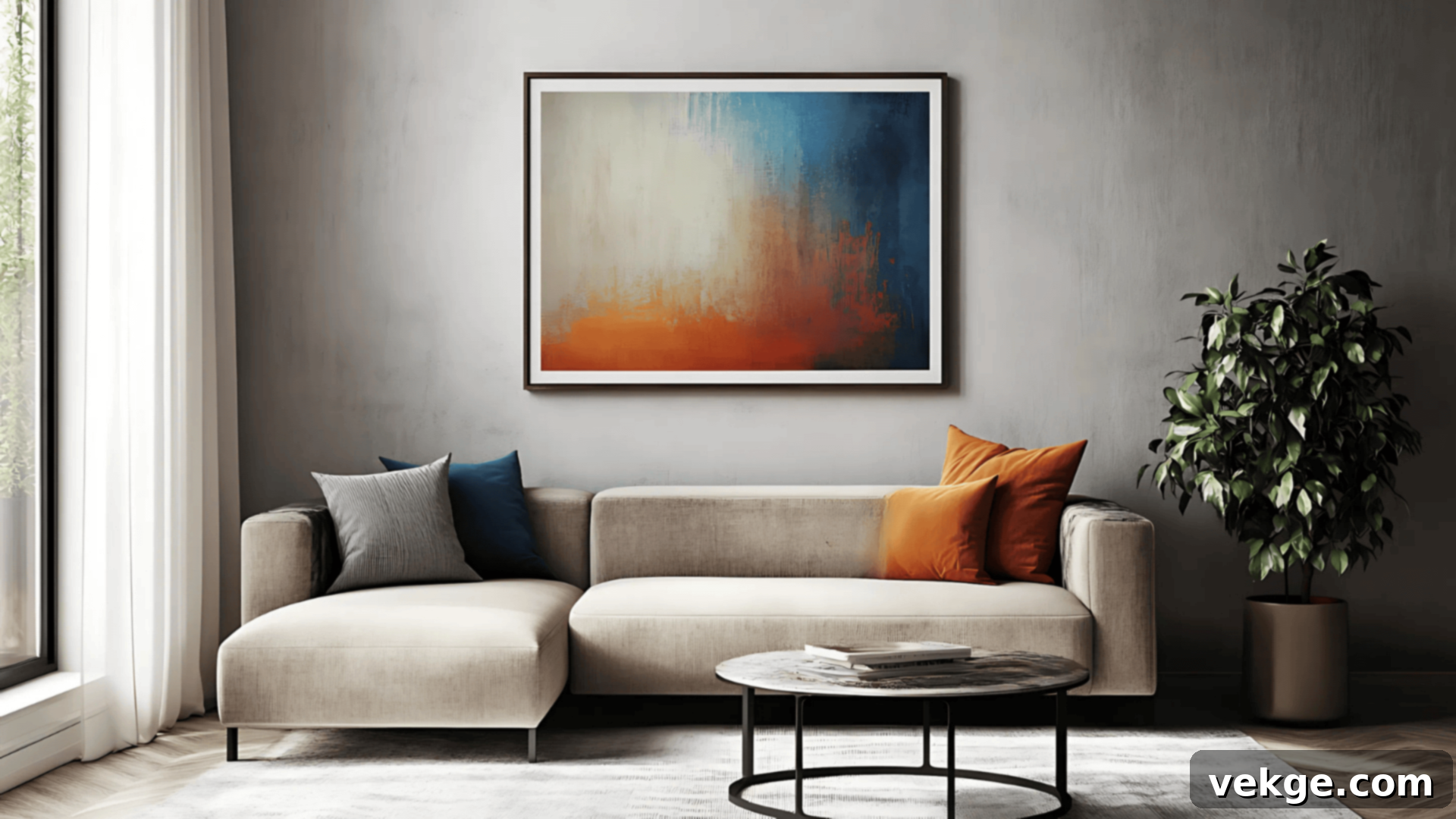
For general interior walls throughout your home, satin paint represents one of the most common and effective uses, particularly in spaces where you desire a touch more polish and visual interest than what a flat paint provides. The gentle sheen of satin adds a subtle depth to wall colors, enhancing their richness without becoming overly distracting or creating a formal atmosphere that might not suit every home style.
Satin Paint for Common Surfaces: Beyond Just Walls
The utility of satin paint extends far beyond just walls, establishing it as a highly flexible and adaptable option for various elements within your home. Understanding which specific surfaces benefit most from this finish can significantly help in creating a cohesive and well-maintained interior design.
Trim and Doors: Enduring Elegance for High-Touch Areas
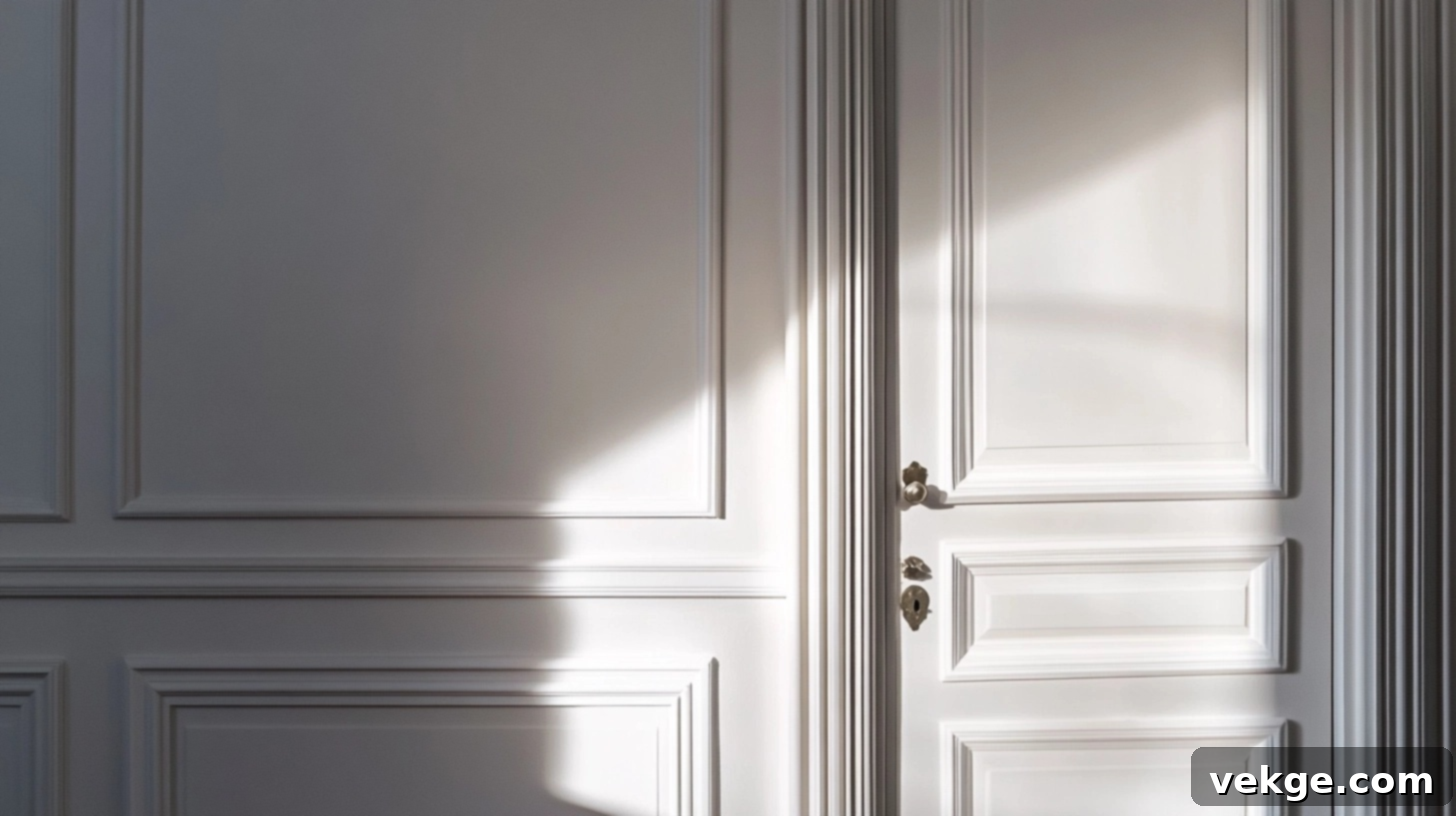
Trim, baseboards, and doors are frequently touched surfaces that endure significant wear and tear. They greatly benefit from satin paint’s combination of mild shine and impressive toughness. These elements require a paint that can withstand constant contact, cleaning, and occasional bumps. Satin offers superior durability compared to flatter finishes, while still maintaining a subtle, tasteful appearance that complements the overall room design without being overly reflective.
Ceilings: A Brighter Alternative to Flat
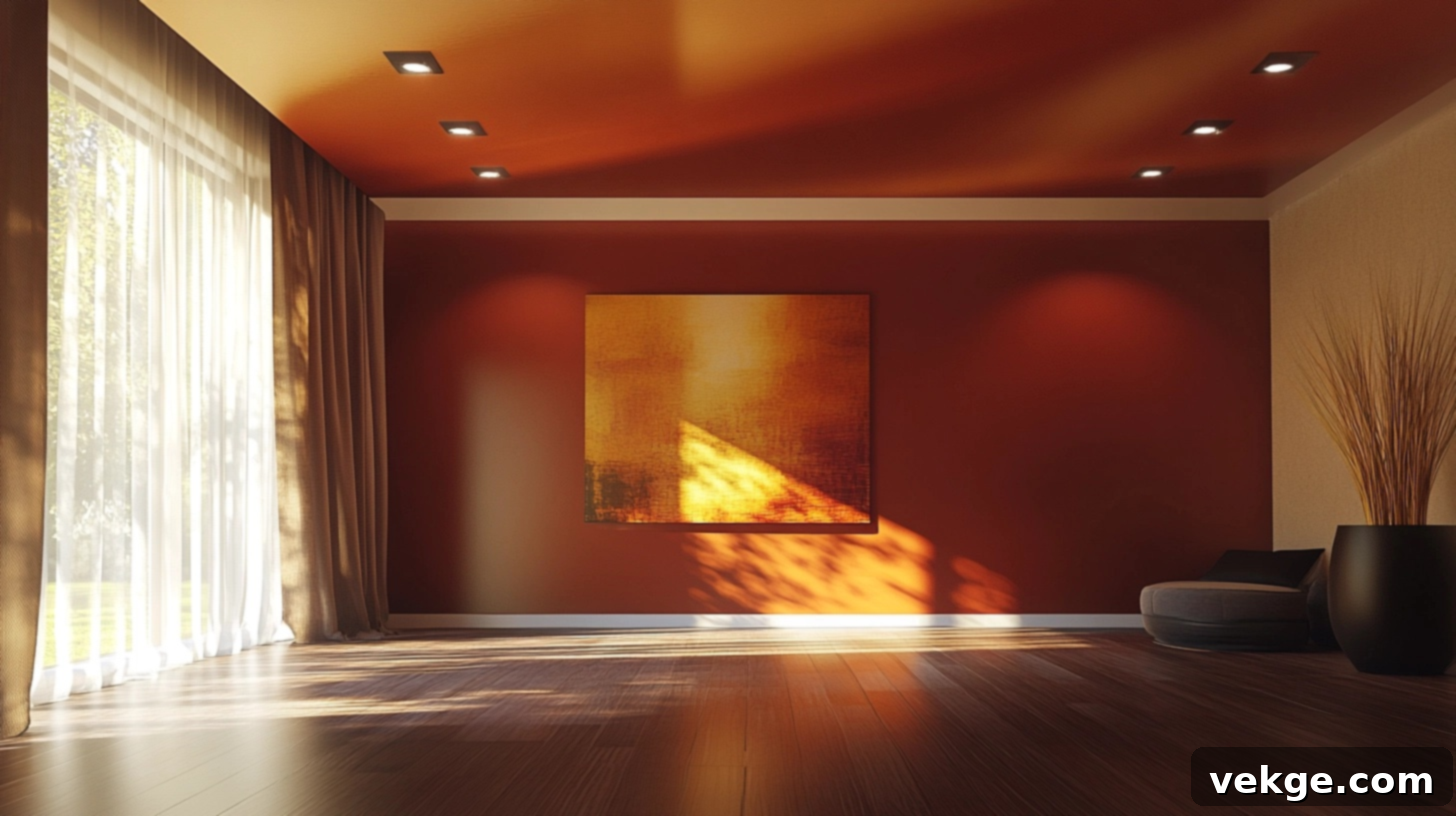
While flat paint is traditionally the standard choice for ceilings due to its ability to hide imperfections and absorb light, satin paint can be an excellent alternative under certain conditions. In rooms with limited natural light or in spaces where you wish to subtly enhance brightness and depth, satin’s light-reflecting qualities can help to visually lift and expand the room, offering a more luminous effect than a purely flat finish.
Cabinets and Furniture: Durable Beauty for Everyday Use
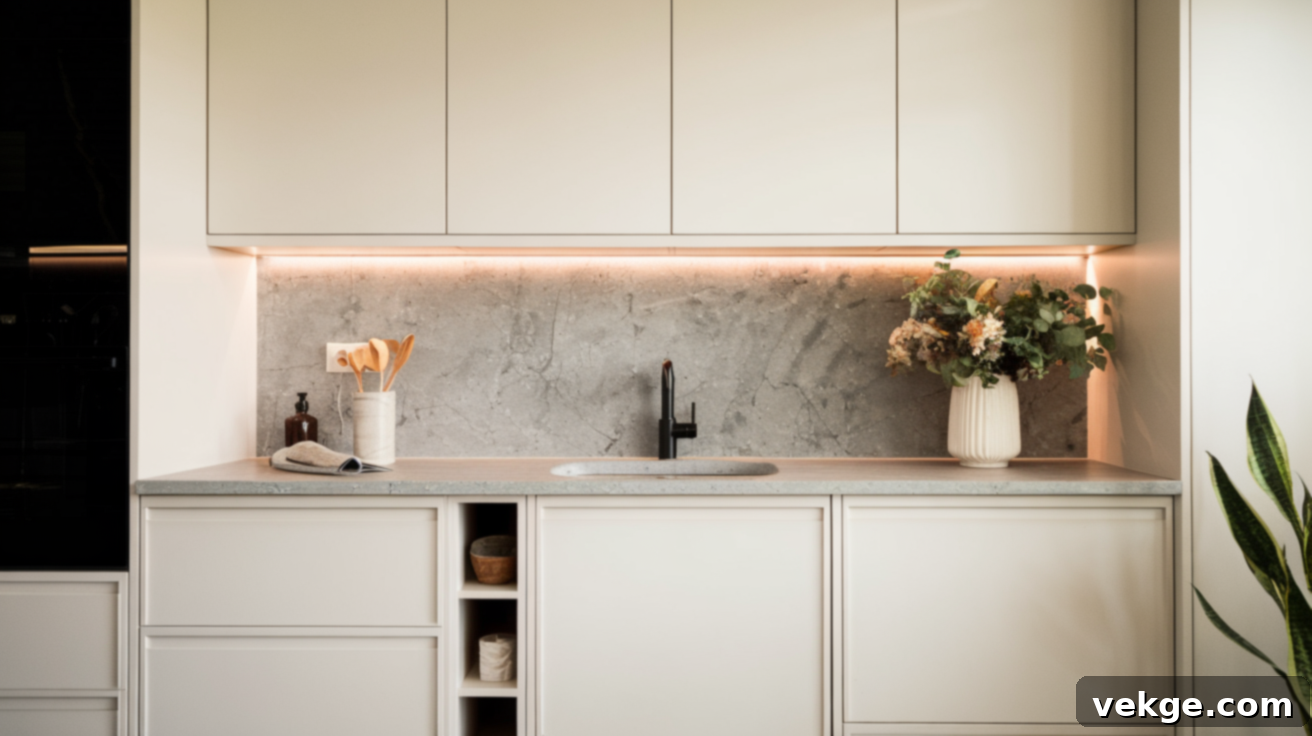
Old or new, cabinets and furniture pieces can be beautifully revitalized with satin paint. This finish provides ample protection for these high-use items, allowing the color to shine through with a refined elegance. Satin paint is notably less prone to chipping and scratching than flat paints, offering enhanced longevity. Crucially, it achieves this durability without creating the often-undesirable plastic-like appearance that can result from higher gloss options, maintaining a sophisticated and tactile feel.
Satin Paint vs. Other Finishes: A Comparative Guide
Making the best paint choice for your home involves more than just selecting a color; it requires a clear understanding of how different paint finishes perform and appear. This section provides a straightforward comparison, illustrating how satin paint distinguishes itself from other common paint finishes, helping you pinpoint the ideal option for each unique space and surface in your home.
Each finish possesses a distinct set of characteristics regarding its shine, durability, ease of cleaning, and ability to conceal or highlight imperfections. By examining these attributes side-by-side, you can better appreciate the specific advantages of satin paint and decide when another finish might be a more suitable alternative for your project.
| Feature | Satin | Matte | Eggshell | Semi-Gloss | Gloss |
|---|---|---|---|---|---|
| Shine Level | Medium sheen, soft luster | No shine, completely flat | Slight sheen, very low luster | High shine, noticeable reflection | Maximum shine, mirror-like |
| Durability | Good, stands up to moderate wear | Poor to fair, easily scuffed | Fair, better than matte | Very good, highly resistant to wear | Excellent, extremely tough |
| Cleaning Ease | Wipes clean easily with damp cloth | Difficult to clean, can show rub marks | Somewhat cleanable, gentle wiping | Very easy to clean, highly washable | Extremely easy to clean, scrupulously cleanable |
| Flaw Coverage | Shows some imperfections under direct light | Hides most flaws very well | Conceals minor flaws effectively | Highlights imperfections significantly | Reveals all imperfections prominently |
| Light Reflection | Moderate reflection, gentle glow | Absorbs light, no reflection | Minimal reflection, soft light diffusion | Significant reflection, brightens rooms | Mirror-like reflection, maximises light |
| Moisture Resistance | Good, suitable for humid areas | Poor, not recommended for high moisture | Fair, moderate resistance | Very good, excellent for moisture-prone areas | Excellent, forms a strong moisture barrier |
| Best For | Family rooms, children’s rooms, bathrooms, kitchens, hallways, trim | Bedrooms, ceilings, formal dining rooms, low-traffic areas | Living rooms, dining rooms, bedrooms, low-to-medium traffic areas | Trim, doors, cabinets, high-moisture areas (e.g., utility rooms) | Trim, doors, furniture, high-impact areas, dramatic effect |
| Touch-up Ease | Moderate, requires careful blending to avoid lap marks | Easy, often blends seamlessly | Fairly easy, better than satin or gloss | Difficult, touch-ups often visible | Very difficult, almost always visible |
| Application | Requires careful technique and smooth surface prep | Forgiving application, hides brush/roller marks | Relatively easy, less demanding than satin | Requires a skilled, even application for best results | Demands perfect technique and flawless surface preparation |
| Overall Look | Soft, velvety, elegant, modern | Completely flat, sophisticated, modern minimalist | Subtle, low luster, warm, inviting | Bright, noticeable, crisp, clean | Bold, highly reflective, traditional glamour |
Tips for Using Satin Paint Successfully: Achieving a Flawless Finish
From my experience, satin paint has the potential to look truly amazing, but its subtle sheen and medium reflectivity mean that proper application is key. If you dedicate the necessary time to meticulous planning and employ the correct techniques, you will undoubtedly achieve a smooth, professional-looking finish that exquisitely highlights the paint’s understated elegance. Here are essential tips to guide you through the process.
1. Preparation is Paramount for a Perfect Finish
Thorough surface preparation is absolutely critical when working with satin paint. Its slight sheen will readily highlight any existing wall flaws, making them more noticeable. Begin by diligently cleaning your walls to remove all dirt, grease, and oils that can compromise paint adhesion. Use a mild detergent solution and rinse thoroughly. Next, meticulously fill any holes, cracks, or minor imperfections with a quality spackling compound, ensuring a smooth transition to the existing wall. Once dry, sand these patched areas, and indeed the entire wall if necessary, to achieve a perfectly smooth and even surface. Remember, satin finish is far less forgiving than flat paint, so investing extra time in preparation will yield a significantly superior result. Finally, apply a high-quality primer. Primer ensures optimal paint adhesion, provides uniform coverage (especially on patched areas or new drywall), and helps to seal porous surfaces, preventing the topcoat from soaking in unevenly.
2. Choose the Right Tools for Superior Application
The tools you select play a pivotal role in determining the final quality of your satin paint job. For walls, opt for soft-napped microfiber rollers (typically 3/8″ nap or less). These are designed to minimize texture, reduce stippling, and provide a remarkably smooth, consistent coverage. For cutting in along edges, around windows, and for trim work, high-quality synthetic brushes are essential. Look for brushes with finely tapered bristles that reduce visible brush marks and allow the paint to flow evenly and smoothly. A good 2-inch angled brush offers superior control and helps achieve cleaner, straighter lines. While quality tools might represent a slightly higher upfront investment, they are invaluable for achieving a truly professional-looking finish with satin paint.
3. Master the Art of Even Coats for a Flawless Result
Your application technique will make a significant difference in the final appearance of satin paint. Work in manageable sections, typically 3×3 foot squares, to prevent the paint from drying too quickly. Maintain consistent, medium pressure with your roller, using a “W” or “M” pattern to distribute the paint evenly before filling in the pattern. Crucially, avoid overworking the paint by going over the same area repeatedly, as this can create noticeable brush or roller marks and disturb the paint’s leveling properties. Always apply two thin coats rather than one thick coat; this strategy enhances durability, improves coverage, and results in a much smoother, more refined appearance. To prevent visible stopping points, aim to complete an entire wall before taking extended breaks. Always maintain a “wet edge” by slightly overlapping into the previously painted, still-wet area with each new section you paint. This ensures seamless blending and prevents lap marks.
Pros and Cons of Satin Paint: Weighing Your Options
Satin paint is a highly favored finish for numerous reasons, offering a blend of aesthetic appeal and functional benefits. However, like any paint finish, it also comes with a few limitations that are important to consider before committing to it for your next painting project. Understanding both its strengths and weaknesses will help you make the most appropriate choice for your home.
Key Benefits of Satin Paint
- Exceptional Cleanability: One of satin paint’s most significant advantages is its ease of cleaning. Surfaces painted with satin can typically be wiped clean with just a damp cloth, making it an incredibly practical and hygienic choice for areas prone to spills, smudges, and daily dirt, such as kitchens, bathrooms, and children’s rooms.
- Superior Durability and Longevity: Satin paint boasts impressive durability, allowing it to withstand daily wear, scuffs, and abrasions far better than less resilient flat or matte finishes. This makes it a long-lasting option for high-traffic areas and active households, reducing the need for frequent repainting.
- Remarkable Versatility: Its balanced sheen and durability make satin paint exceptionally versatile. It is an excellent choice not only for walls but also for trim, doors, and even specific furniture pieces, contributing to a cohesive and well-finished look throughout your home.
- Mildew Resistance: Due to its smoother, less porous surface compared to flat paints, satin paint offers enhanced resistance to mildew and mold growth. This property makes it particularly well-suited for humid environments like bathrooms, laundry rooms, and basements.
- Subtle Aesthetic Appeal: Satin provides an elegant, soft sheen that adds depth and sophistication to colors without being overly shiny. It strikes a perfect balance between concealing minor flaws (better than gloss) and offering visual interest (more than flat).
Potential Drawbacks of Satin Paint
- Highlights Application Flaws: Due to its light-reflecting qualities, satin paint can make brush strokes, roller marks, and uneven application more noticeable than a flat finish would. This necessitates more careful technique during painting.
- Reveals Wall Imperfections: While better than gloss, satin finish does not hide wall imperfections as effectively as matte paint. Small dents, patches, or uneven textures on the wall surface can become more apparent under certain lighting conditions.
- Challenging for Touch-Ups: Achieving seamless touch-ups with satin paint can be difficult. New paint often doesn’t blend perfectly with older, cured paint, potentially resulting in visible differences in sheen or color, especially in areas with direct light.
- Demands Thorough Preparation: To achieve the best results, satin paint requires a higher level of surface preparation compared to flat finishes. Any areas that are not properly cleaned, patched, or sanded smooth will likely be highlighted by the paint’s sheen.
- Slightly Higher Cost: Sometimes, paints with a satin finish can be marginally more expensive per gallon than basic flat paints, reflecting their enhanced durability and specialized formulation.
Cleaning and Maintenance of Satin Paint: Keeping Your Walls Pristine
Satin paint justly earns its reputation as a practical and enduring choice, largely due to its superior cleaning properties and ability to maintain its attractive appearance over time. Unlike more delicate flat finishes that can be easily damaged or marred by aggressive cleaning, satin-painted surfaces are robust enough to handle regular washing without losing their subtle sheen or color integrity. Proper care and maintenance will ensure your satin-painted walls look their best for many years.
- Regular Dusting: For routine maintenance, use a soft, lint-free cloth or a feather duster to gently remove dust from your walls. For a slightly deeper clean, lightly dampen the cloth with plain water.
- For General Cleaning: When tackling tougher spots, mix a small amount of mild dish soap (e.g., a few drops) with warm water. Use a soft sponge or cloth dampened with this solution.
- Always Test First: Before applying any cleaning solution to a visible area, always perform a patch test in an inconspicuous spot (like behind furniture or in a closet) to ensure it doesn’t damage or discolor the paint finish.
- Gentle Stain Removal: For stains, gently dab the affected area rather than scrubbing harshly. Aggressive scrubbing can potentially damage the paint surface or create shiny spots. Work from the outside of the stain inwards to prevent spreading.
- Rinse Thoroughly: After cleaning with a soapy solution, use a clean, damp cloth (moistened with plain water) to wipe off any soap residue. This prevents streaks, dullness, or potential buildup on the surface.
- Allow to Air Dry: Let the walls air dry completely after cleaning. Avoid using towels or rags to dry the walls, as this can leave behind lint or streaks.
- Prompt Action for Marks: Address spills and marks as quickly as possible. The longer stains sit on the surface, the more difficult they can become to remove.
- Avoid Harsh Cleaners: Steer clear of abrasive cleaners, scouring pads, and cleaning solutions containing harsh chemicals like ammonia, alcohol, or bleach, as these can severely damage the satin finish, leading to dullness, discoloration, or even stripping the paint.
- Touch-Ups for Minor Scuffs: Keep a small amount of your leftover satin paint. For minor scuffs or chips, use a small artist’s brush to carefully touch up the affected area. Blend gently, but be aware that touch-ups on satin can sometimes be visible if not applied perfectly.
- Consider Repainting: In very high-traffic areas, or rooms that undergo frequent, intensive cleaning, you might consider repainting every 3–5 years to maintain the pristine appearance and protective qualities of the satin finish.
With proper care and mindful maintenance, satin-painted surfaces will retain their beauty, durability, and practical advantages for many years, making them a wise and long-lasting investment for busy and active homes.
Conclusion: Embracing the Versatility of Satin Paint
Choosing the right paint finish is a pivotal step in any home decorating or renovation project. Satin paint emerges as a truly outstanding and versatile option, providing an ideal balance of aesthetic appeal, robust durability, and practical ease of maintenance. Its gentle sheen adds sophistication and depth to any room, while its enhanced resistance to scuffs, moisture, and stains makes it a highly functional choice for even the busiest areas of your home.
As you plan your next painting venture, consider the specific needs of each room: think about its lighting conditions, the current state of its walls, and the anticipated level of traffic and cleaning required. For high-activity zones like kitchens, bathrooms, hallways, and children’s rooms, satin paint offers a compelling solution that combines lasting beauty with everyday resilience.
Remember, the secret to unlocking the full potential of satin paint lies in meticulous preparation. Taking the time to properly clean, patch, and prime your surfaces will pave the way for a stunning, professional-quality finish that you’ll enjoy for years to come. Now that you are equipped with a thorough understanding of what satin paint is, its unique benefits, and how it compares to other options, you can select your paint finish with absolute confidence, transforming your house into a beautifully maintained home.
For more expert home painting tips, including advice on selecting the perfect wall colors and mastering various painting techniques, be sure to browse our other helpful guides.
Frequently Asked Questions About Satin Paint
Does satin paint scratch easily?
Satin paint offers good scratch resistance, performing significantly better than a delicate flat or matte finish. While it holds up very well in normal-use areas and can withstand everyday wear and tear, it is not as hard as semi-gloss or high-gloss paints. Therefore, under conditions of extremely heavy impact or repeated abrasion, it may still show damage more readily than its glossier counterparts.
Is satin paint good for kitchen cabinets?
Absolutely, satin paint is an excellent choice for kitchen cabinets, provided the surfaces are properly prepped beforehand. Its key benefits for cabinets include good resistance to moisture and common kitchen stains, making it easy to wipe down splashes and spills. The finish offers a durable surface that can withstand the daily use and frequent handling that kitchen cabinets endure, all while providing a sophisticated, low-sheen look that avoids the overly shiny appearance of high-gloss options.
Is satin paint good for front doors?
Yes, satin paint is an ideal choice for front doors, offering a perfect balance of aesthetics and durability for this high-impact area. It provides a balanced finish that is robust enough to stand up to varying weather conditions, frequent handling, and general wear and tear. Furthermore, its moderate sheen is sufficient to highlight the door’s color and architectural details beautifully without creating the harsh, mirror-like glare often associated with high-gloss finishes, ensuring an inviting and elegant entrance to your home.
